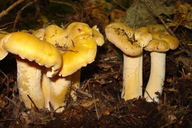
They look like the albiceps sub-variety, which grows earlier in the season.
A more typical looking chantrelle, probably of cibarius sub-variety, with a non-convex, saddle-like head.

|
A groups of Cantharellus Cibarius (Chantrelle). They look like the albiceps sub-variety, which grows earlier in the season. A more typical looking chantrelle, probably of cibarius sub-variety, with a non-convex, saddle-like head. |
| (~3 Mb) (~300 Kb) |
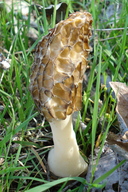
|
Morchella (Morel). I can't tell for sure, but it looks like the blond conica variety. Some people warn about consuming alcohol with it. In contrast to most mushrooms, which grow during the Fall, morels grow during the Spring. |
| (~3 Mb) (~300 Kb) |
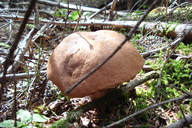
|
Leccinum Aurantiacum (Red Cap Bolete). This specimen weights about 250 g, slightly over half a pound. Another picture of 4 red caps. This variety is very easy to identify by the elegant colors (dark reddish, pale grey, white and black) and the cuticle, which is very thick and ends loose. |
| (~3 Mb) (~300 Kb) |
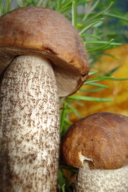
|
Leccinum insigne, two very young specimens. The stem and flesh may become slightly dark when cooked, but do not change color when cut. Leccini are consumed by deers and snails, but in contrast to many other boleti are pretty immune from worms. |
| (~3 Mb) (~300 Kb) |
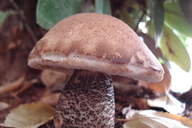
|
Leccinum atrostipitatum (Black stemmed leccinum). This specimen comes from a patch that produces a new batch of mushrooms every few days for weeks or months during the season. In the old world, such a patch is called a "fungaia" and is considered precious enough to pass its location to the favored heir in a will. |
| (~3 Mb) (~300 Kb) |